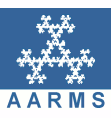 |
|
||||
Org: Jahrul Alam (Memorial) et Wenyuan Liao (Calgary)
[PDF]
- JAHRUL ALAM, Memorial University of Newfoundland, St. John's, NL
A multi-level adaptive numerical method for nonlinear boundary value problems [PDF] -
Nonlinear boundary value problems occur in many practical applications in science and engineering. Classical iterative methods require a full linearizion of the nonlinear system. Multi-grid full approximation schemes (FAS) require a directional coarsening to significantly improve the rate of convergence for advection diffusion boundary value problems.
This work reports on the development of an efficient multi-level adaptive scheme for solving nonlinear advection-diffusion boundary value problems. A multi-level solver is proposed using the second generation adaptive wavelet collocation method (AWCM). The solver does not calculate explicitly the Jacobian of the nonlinear system. We have verified numerically that the CPU time remains approximately proportional to the number of grid points if the mesh is refined locally to resolve small scale features of the solution.
- JOHN BOWMAN, University of Alberta, Edmonton, AB, T6G 2G1
A Fully Lagrangian Advection Scheme for Dirichlet Boundary Conditions [PDF] -
A numerical method for passive scalar and self-advection dynamics, Lagrangian rearrangement, is proposed. This fully Lagrangian advection algorithm introduces no artificial numerical dissipation or interpolation of parcel values. In the inviscid limit, it preserves the infinity of Casimir invariants associated with parcel rearrangement. In the two-dimensional case presented here, these invariants are arbitrary C1 functions of the vorticity and concentration fields. The initial parcel centroids are evolved in a Lagrangian frame, using the method of characteristics. At any time this Lagrangian solution may be viewed by projecting it onto an Eulerian grid using a rearrangement map. The resulting rearrangement of initial parcel values is accomplished with a weighted Bresenham algorithm, which identifies quasi-optimal, distributed paths along which chains of parcels are pushed to fill in nearby empty cells. The error introduced by this rearrangement does not propagate to future time steps.
For simplicity, the Lagrangian rearrangement algorithm was initially developed for periodic boundary conditions. In this work we discuss the extension of the method to Dirichlet boundary conditions.
- SHARENE BUNGAY, Memorial University of Newfoundland, St. John's, Newfoundland
Topological Indices for Chemical Structure Identification [PDF] -
Chemical structures (often represented as graphs) have a number of identifying properties, the most obvious being atoms (vertices) and bonds (edges). Although humans can easily determine whether two structures are the same or similar visually, computational chemical structure identification has proven to be a difficult task. With advances in technology resulting in a drastic increase in the number and rate of structures that are computed, the creation of databases with advanced search capabilities has become a necessity. Consequently, tools that allow for the identification of points of interest and the determination of levels of similarity between multiple structures are becoming increasingly important. Existing chemical structure representation schemes will be discussed in the context of our own topological indices which assign, based on its chemical environment (nearest neighbours), numerical values to each atom and bond in a structure. Such topological indices allow identification of functional groups (specific groups of atoms within a structure that exhibit characteristic chemical behaviour) and will be used to develop substructure search algorithms as used in the pharmaceutical industry to identify drug candidates. Further, easily computed properties of chemical structures have been seen to be useful in assessing similarity.
- MARINA CHUGUNOVA, University of Toronto
Dynamics of a viscous incompressible fluid on the outer surface of a rotating cylinder [PDF] -
We consider a nonlinear fourth-order degenerate parabolic partial differential equation which describes the dynamics of an incompressible thin liquid film on the outer surface of a rotating horizontal cylinder in the presence of gravity. The equation contains two nonnegative parameters proportional to gravity and surface tension respectively. These parameters determine a rich variety of regimes which we analyze analytically and numerically.
- RONALD HAYNES, Acadia University, Wolfville, NS
Adaptive Space-Time Methods for Differential Equations [PDF] -
Realistic (and interesting) mathematical models often involve quantities which vary over disparate time and space scales. Successful simulation necessarily involves a blend of computational techniques and close attention to the details of the interaction between them. In this talk I review two such instances: the solution of boundary layer (or interior layer) problems utilizing fast linear algebra update strategies and recent advances in the development of a 2D Schwarz waveform relaxation moving mesh method.
- SHAHADAT HOSSAIN, University of Lethbridge
The CPR Method and Beyond [PDF] -
In 1974, A. R. Curtis, M. J. D. Powell, and J. K. Reid published a seminal paper on the estimation of Jacobian matrices which was later coined as the CPR method. Central to the CPR method is the effective utilization of a priori known sparsity information. It is only recently that the optimal CPR method in its general form is characterized and the theoretical underpinning for the optimality is shown. In this talk we provide an overview of the development of computational techniques and software tools for the estimation of Jacobian matrices over the last 30+ years.
- NICHOLAS KEVLAHAN, McMaster University
Shock generated vorticity in the interstellar medium and the origin of the stellar initial mass function [PDF] -
We examine the density and velocity structure of interstellar gas traversed by curved shock waves. We demonstrate mathematically that just a few passages of curved shock waves generically produces a log-normal density PDF. This explains the ubiquity of the log-normal PDF in many different numerical simulations. We also show that subsequent interaction with a spherical blast wave generates a power-law mass distribution at high densities, similar to the Salpeter index for the IMF. Finally, we show that a focused shock produces a downstream flow with energy spectrum exponent a = -2. Subsequent shock passages reduce this slope, achieving a » -5/3 after a few passages. These results suggest that fully-developed turbulence may not be required to explain the observed energy spectrum and density PDF.
On the basis of these mathematical results, we argue that the self-similar spherical blast wave arising from expanding HII regions or stellar winds from massive stars may ultimately be responsible for creating the high mass, power-law, Salpeter-like tail on an otherwise a log-normal density PDF for gas in star forming regions. The IMF arises from the gravitational collapse of sufficiently overdense regions within this PDF. Thus, the composite nature of the IMF-a log-normal plus power-law distribution-is shown to be a natural consequence of shock interaction and feedback from the most massive stars that form in most regions of star formation in the galaxy.
- SERPIL KOCABIYIK, Memorial University of Newfoundland
A fixed-grid model for simulation of a moving body in free surface flows [PDF] -
A two-dimensional computer model is developed to simulate free surface flow interaction with a moving body using a fixed-grid system. The two-phase flow model is based on a viscous incompressible two-fluid model with an oscillating circular cylinder. This method is based on a finite volume discretization of the two-dimensional unsteady Navier-Stokes equations and uses improved volume-of-fluid method for the displacement of the free surface. The code validations in special cases show good comparisons with previous experimental and numerical results.
- WENYUAN LIAO, University of Calgary
Robust HOC schemes for Burgers' equation with high Reynolds number [PDF] -
Two fourth-order compact finite difference methods are proposed to solve the one-dimensional Burgers' equation with high Reynolds number. The methods are based on the Hopf-Cole transformation, Richardson's extrapolation and multilevel grids. Numerical experiments are included to demonstrate the efficiency, accuracy, robustness and unconditional stability of the methods.
- JEFF M. MCNALLY, St. Francis Xavier University, Antigonish, Nova Scotia, B2G 2W5
A Parallel Solution for Diagonally Dominant Pentadiagonal Toeplitz Linear Systems [PDF] -
Symmetric pentadiagonal Toeplitz systems of linear equations arise in many application areas involving finite difference methods with equi-step sizes. Recently, significant advancement has been made into algorithm development for fast parallel scalable solutions for solving diagonally dominant tridiagonal Toeplitz Linear systems as well as in sequentially solving diagonally dominant symmetric pentadiagonal problems using similar fast approaches. In this talk we will introduce two new scalable parallel algorithms for solving symmetric pentadiagonal Toeplitz systems of linear equations based upon parallel techniques used by McNally et al. in A communication-less parallel algorithm for tridiagonal Toeplitz systems (2008) and a sequential algorithm presented by McNally in A Fast Algorithm for Solving Diagonally Dominant Symmetric Pentadiagonal Toeplitz Systems (2008).
- DALI ZHANG, University of Calgary, 2500 University Drive NW, Calgary, Alberta, T2N 1N4
Padé approximation for identification of Q-factor of a viscoelastic medium [PDF] -
The talk discusses an inverse problem for estimating Q-factor of a viscoelastic medium from complex effective modulus. The approach is based on the reconstruction of the spectral measure in the analytic Stieltjes integral representation of the complex effective modulus using Padé approximation. The spectral measure contains information about the relaxation spectrum of the medium and is uniquely determined if the spectral function is known on an arc in the complex plane.
However, the problem of reconstruction of the spectral measure is ill-posed and requires regularization. A discrete [p, q]-Padé approximation of the spectral measure is derived from a constrained least squares minimization problem with regularization. Numerical examples are given to demonstrate the validity of the inversion method.
This is a joint work with Michael P. Lamoureux and Gary Margrave at the University of Calgary.







